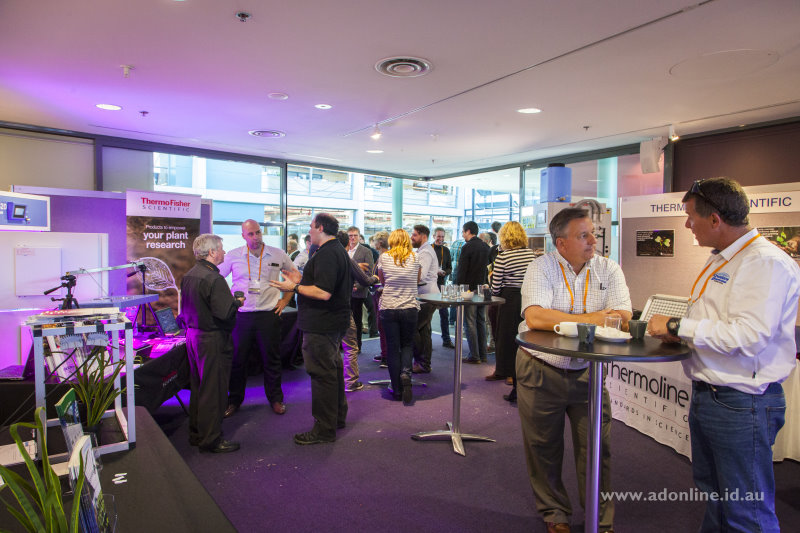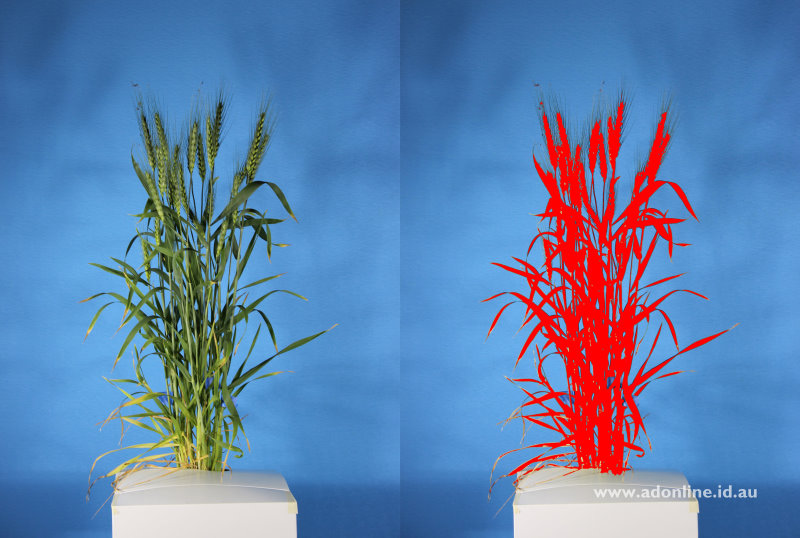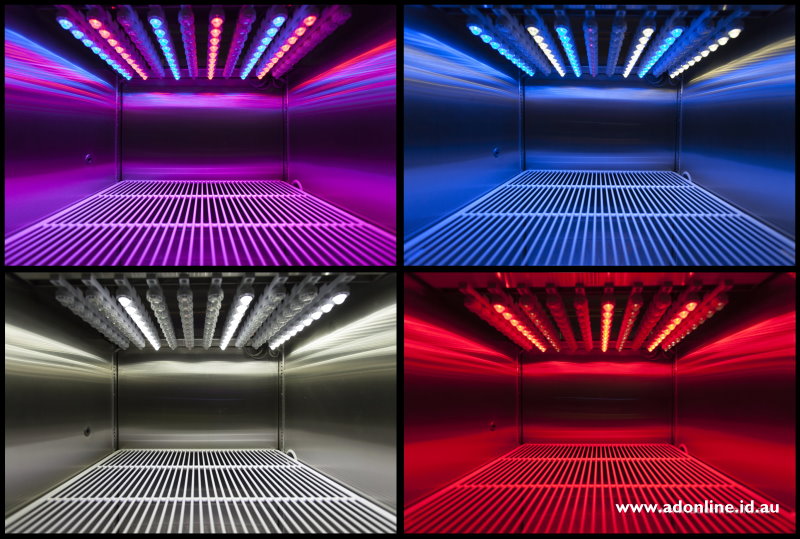AusPheno 2016
A review of the 5th International Controlled Environment Conference held at the CSIRO Discovery Centre in Canberra.
The 5th International Controlled Environment Conference (AusPheno 2016) has just concluded in Canberra, so I thought I might share some of my thoughts about an area of the plant sciences that is being rapidly transformed by technology in a range of fields. The discipline of plant science is changing quickly and I feel privileged to be a part of it.
AusPheno was held at the CSIRO’s Discovery Centre at the Black Mountain Laboratories in Canberra. The conference was principally focussed on “phenomics“, which is the science of measuring the physical and biochemical traits of plants in response to environmental influences. In essence, how does the appearance of a plant change in response to stimuli and what can we infer from that?

There are many changes afoot in the plant sciences, but one of the greatest advances we have made is in plant imaging. By photographing plants during experiments, we can measure a great number of parameters including growth, leaf colour, chlorophyll content, nutrient status, organ size and so on. The possibilities are endless because we’re now able to measure these parameters in a high-throughput, comprehensive and quantitative manner that was never possible before.
The days when researchers would measure traits with rulers or count individual leaves in a laborious effort for very little data are rapidly coming to an end. Now, we can use advanced photography and sophisticated software to analyse thousands of plants and collect all sorts data that greatly enhances our understanding of plant physiology.

Plant phenomics research is very expensive and a number of multimillion dollar facilities have been established across Australia to allow high-throughput or high-resolution imaging of plants in controlled environments including the Australian Plant Phenomics Facility (which includes The Plant Accelerator, Adelaide and the High Resolution Plant Phenomics Centre, Canberra), DEDJTR’s Plant Phenomics Victoria (Horsham) and ANU’s awesomely-named SpectralPhenoClimatron (Canberra).
The AusPheno conference explored a number of aspects related to phenomics and a number of key themes came out which I thought I’d describe here.
LEDs are revolutionising everything
One of the greatest technical advances in the last few years has been in the further development of Light Emitting Diodes (LEDs). Scientists have long known that specific wavelengths of light will have a variety of influences on plants, but with the advent of LED technology it is now possible to expose plants to very specific wavelengths of light to elicit certain responses.

A number of research groups have been conducting studies into the use of LEDs compared to traditional (fluorescent or metal-halide) lighting and I was especially impressed with the talk by Erik Runkle (Michigan State University, USA) who has used narrow-band LEDs to elicit specific responses in lettuce. Given the growth of interest in “vertical farming” and the importance of lighting to such systems, we also heard some very good talks from Matthew Mickens (NASA, USA) and Jason Lanoue (University of Guelph, Canada) whilst Bruce Bugbee (Utah State University, USA) looked at the technical and engineering limitations of such systems.
Imaging technology is expanding our vision
In the world of phenomics, you’ll hear plant researchers talking about “RGB imaging”. RGB stands for red-green-blue and represents the sort of photography that your standard point-and-shoot or dSLR camera will take in the visible spectrum. RGB imaging is great for measuring biomass accumulation or changes in leaf colour, but there’s a lot more to see than that.
Thermal imaging cameras can take direct measurements of canopy temperature and help to identify the warmer and cooler parts of a plant. Hyperspectral cameras allow reflected light to be photographed at a wide range of spectra from ultraviolet to far red. The light that is reflected can tell us a lot about a number of chemical processes that are occurring within plants as well as identify disease infection.
With all this investment in equipment and fancy ‘toys’, it’s easy to become distracted. Xavier Sirault spoke about some of the new tools developed at CSIRO such as PODD and PhenoSmart, but reminded the conference that phenomics should be about transforming data into knowledge and challenging assumptions rather than boasting about equipment. This spawned quite a bit of discussion!
Creativity is king
It’s not just the new types of cameras that are expanding our horizons, it’s the equipment that they’re mounted to. I have recently been running experiments on plants grown in glasshouses and controlled environment cabinets, but this technology can also be taken outside into the paddock.
Several researchers presented impressive results obtained from imaging plants grown in fields or even arboreta. Blimps, drones and a range of modified terrestrial vehicles have all been employed to take images of field crops and infer information about their water status, growth and nutrient levels. Even in the glasshouse, plants can be grown on tracking systems and passed through imaging booths to allow highly accurate imaging, but they can also be left in situ. A number of examples of ‘cranes’ were shown where the camera and measuring equipment passes over the plants along a track on the ceiling to gather image information.
Data is our biggest bottleneck
The problem with having such impressive measuring equipment and the ability to run experiments involving thousands of plants at a time is that the data can become overwhelming. What can a researcher do with a CSV file containing 500,000 lines of data? This tends to be a bit of a problem for researchers because contemporary data analysis software such as Excel can’t cope.
Any one experiment may produce many hundreds of thousands of images and a database of considerable size. The data then has to be analysed to obtain meaningful results and that requires considerable computing power.
Researchers spoke of their need to employ systems administrators to help store data and manage servers. Some people are using cloud-based systems for data storage whilst others are setting-up large servers in-house. Whatever method is chosen, there is considerable expense and technical expertise involved.
One of the exciting developments are the various software packages that various groups have developed to assist with part of this process. For instance, Zegami helps researchers to visualise their images in batches to help tease out trends and assist with basic graphing whilst TraitCapture‘s drag-and-drop simplicity looks like it could revolutionise data analysis. Many more examples were described.
Starting low
When we look at plants, we tend only to see half the organism. The vegetative part is easy to measure and photograph, but what about the roots? For very obvious reasons, these have historically been very difficult to analyse in a non-destructive manner, but that is starting to change.
We were shown some exciting technologies that have allowed plant images to be visualised through the soil in the pot. These technologies are in their infancy and are rather expensive, yet show much promise. Stefan Gerth‘s talk about x-ray computer tomography was really impressive.
The sky truly is the limit
Well, the sky really is the limit in plant phenomics because we were treated to a couple of presentations from NASA staff Matthew Mickens and Gary Stutte discussing their work on the VEGGIE programme to grow plants on the International Space Station!
A well-rounded conference
Of course a science conference is not just about the science. Events such as these are as much about making new connections with peers as well as sampling some local culture.
The conference dinners were a great opportunity to network. Held in the very cathedralesque University House at the Australian National University, the conference dinners were set in a most unusual setting but one that suited the occasion. The catering was excellent and I had a most enjoyable experience.

The AusPheno conference ran for four days and included a day trip to the Australian National University’s Kioloa Field Campus (which I didn’t attend). The science was fantastic, the networking excellent and information-sharing priceless. There was a good selection of trade displays including Heliospectra, PSI and Phenospex amongst many. My only real criticism was of the CSIRO’s Discovery Centre which seemed a little small to host catering and trade displays for a conference of this size (although the theatre was fine).
The proceedings from AusPheno are available on their website. More photos can be viewed on Flickr.
Disclaimer
These views are my own, and do not represent the views of my employer.
Comments
No comments have yet been submitted. Be the first!